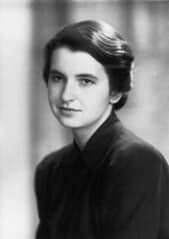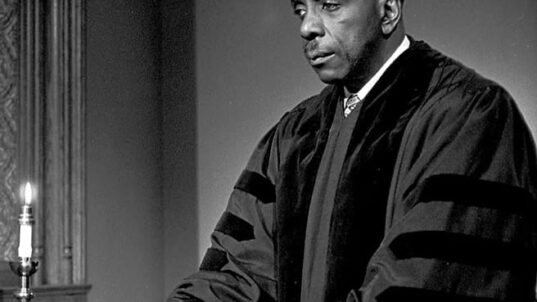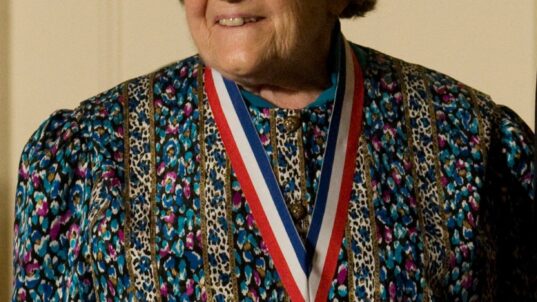
“Rosalind Franklin” by Faded Times CC PDM 1.0
Rosalind Franklin grew up in a politically active Jewish family in the UK. Her parents helped settle Jewish refugees who escaped the Nazi regime in Germany. She was an outstanding student who excelled in STEM subjects as well as languages and sports. She received a Ph.D. from Cambridge with an emphasis in Chemistry.
Rosalind had a special interest in x-ray crystallography, which she could use to determine the structure of a crystal. She was awarded a three-year fellowship to work at King’s College in London. While there, she was provided a graduate assistant, Raymond Gosling, to study DNA.
The team of Franklin and Gosling made an unexpected discovery. There were actually two forms of DNA, which they labeled A and B. One photograph they took, Photo 51, was so distinctive it became the basis for the discovery of the helical structure of DNA.

Photo 51, by Raymond Gosling/King’s College London
A colleague of Franklin and Gosling shared Photo 51 with another research team, James Watson and Francis Crick (the circumstances behind this are unclear, but it coincided with Franklin’s departure from King’s College). Watson and Crick went on to get credit for discovering the structure of DNA, eventually receiving the Nobel Prize for their work. When they published an article revealing the structure of DNA, the only mention of the contribution made by Franklin and Gosling was in a footnote. Franklin never complained of not receiving the recognition she deserved.
Unfortunately, Franklin’s contributions were never fully recognized in her lifetime. She died at the age of 37. Another colleague of hers did win a Nobel Prize for the work that Franklin helped him initiate. The Nobel committee does not recognize efforts posthumously.
We often think of innovation as the work of an individual or small team of individuals. What are often ignored are the contributions of many others who provided the groundwork for those innovations. Franklin and Gosling’s Photo 51 has become the basis of untold discoveries and innovations affecting all of us. But little recognition is given to the “genesis spark” that has spurred so much innovation.
How might innovation change if it became more of a collaboration than a competition? Does competition drive innovation or slow it down? What if we think of innovation as an iceberg? The smaller part above water would be those who receive recognition for the innovation. The massive part below the surface would be all those contributors who made the discoveries that were essential to the innovation. How might we boost productive innovations by recognizing and supporting the contributions of these essential efforts? Societies are often defined by the innovations made by their citizens. Just imagine what more could be achieved if we better understand the innovation process through its lifecycle.
* * *
“My jaw fell open and my pulse began to race.” – Thomas Watson when he saw Photo 51
This is part of our “Just Imagine” series of occasional posts, inviting you to join us in imagining positive possibilities for a citizen-centered democracy.



